A Short Guide to Curtain Headings
One of the major advantages of Made to Measure curtains is the ability to specify the type of heading you would like on your curtain. By ‘Heading’ we mean the appearance of the top of your curtain and how it is subsequently attached to the curtain track or pole. As curtains are an important feature of your room, it is important to understand the different types of headings available and the differences between them - so to help you choose we have produced this short guide to illustrate the differences. There are a signifiant number of different heading styles but we have confined this article to the more popular ones.
We will of course always be happy to give in-house advice as to which heading style will complement the style of your room and achieve the look that you are seeking.
Pencil Pleat Heading
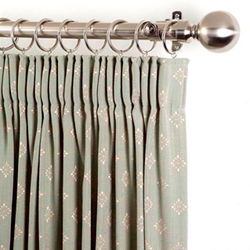
Options:
3” (75mm) wide and 6” (15mm) wide
How it works:
The tape has a series of cords that run laterally along the tape. These cords are pulled to reduce the curtain to the desired width and will produce a series of small folds which in turn create the folds in the curtain below the tape. The tape has rows of pockets into which the curtain hook is then inserted to hang the curtains onto the track or pole. The small folds resemble a row of pencils - hence the term pencil pleat tape. The tape is also sometimes referred to as Rufflette or Regis tape.
Important to Know:
Always insist on woven pockets in the tape rather than pockets formed by strings – a woven pocket will retain its shape but string pockets will stretch and ruin the drape of the curtain.
Can be used with or without tiebacks
Most cost effective option
Best solution if matching with a pelmet
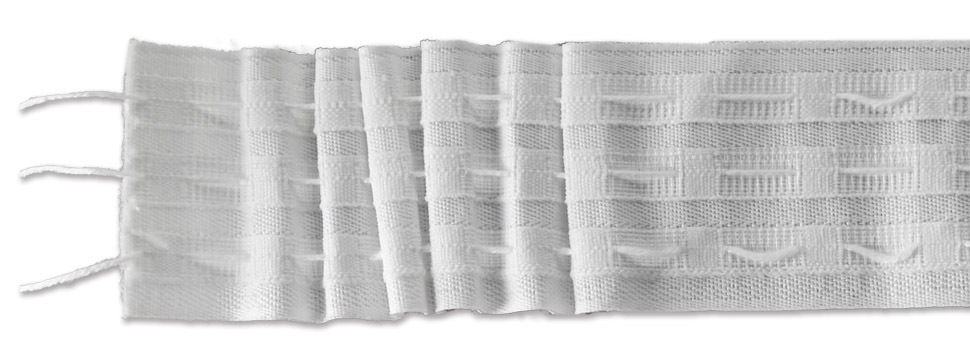 woven pocket pencil pleat tape
woven pocket pencil pleat tape
Pinch Pleat Heading
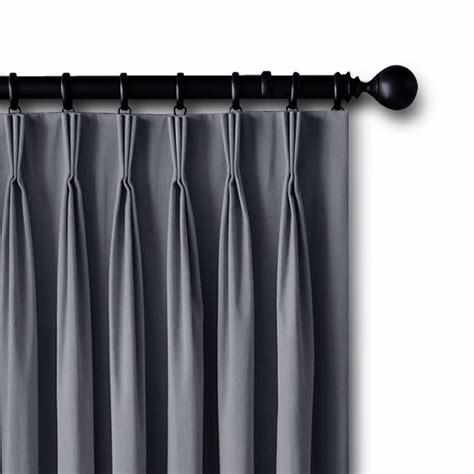 triple pinch pleat header
triple pinch pleat header
Options:
Double (2 pleats) or Triple (3 pleats)
How it works:
A thin stiffened plain fabric (Buckram) is sewn at the top of the curtain between the lining and face fabric so that the pleats will be crisp and hold their shape. The pleats are then formed at equal spacings and sewn permanently into place. Pinch Pleats use more fabric than pencil pleats and therefore make fuller curtains and will not draw back as far and may cover more of the window. The curtains are then hung using special pinch pleat hooks hooks rather than traditional curtain hooks - traditionally underneath the track / pole.
Important to Know:
Pinch Pleats are a sewn in heading so there is no adjustment of width as with pencil pleat tape. The curtain is reduced in width to the desired final width by adjusting the number of pleats, the spacing of the pleats and the depth of the pleats. This means that all pinch pleat curtains will vary form curtain to curtain.
It is important that there is enough space both sides of the window to ensure the curtains can stack back without squashing the pleats or covering the windows.
Can be used with or without tiebacks
Not suitable if matching with a pelmet as the top cannot be seen
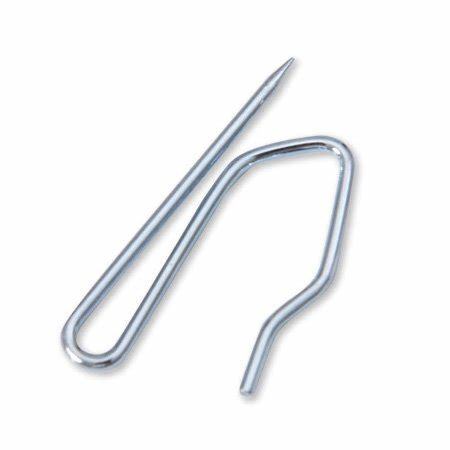 pinch pleat hook
pinch pleat hook
Eyelet Heading
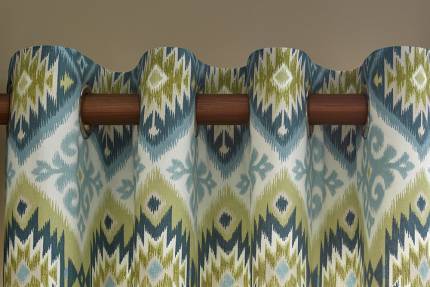
Options:
40mm internal diameter eyelets in a range of colours
How it works:
A thin stiffened plain fabric (Buckram) is sewn at the top of the curtain between the lining and face fabric and a 2-piece eyelet is pressed into the buckram at equal spacings along the top of the curtain. The curtains stack back very uniformly into a small stack. Eyelet curtains are easy to hang and require no dressing.
Important to Know:
Make sure eyelets are made from brass as steel ones will rust over time.
Can be hung only on poles
Not suitable for bay windows
Pole diameter has to be smaller than internal 40mm eyelet diameter
Pole needs to be further away from the wall than with other headings
Tiebacks are not required
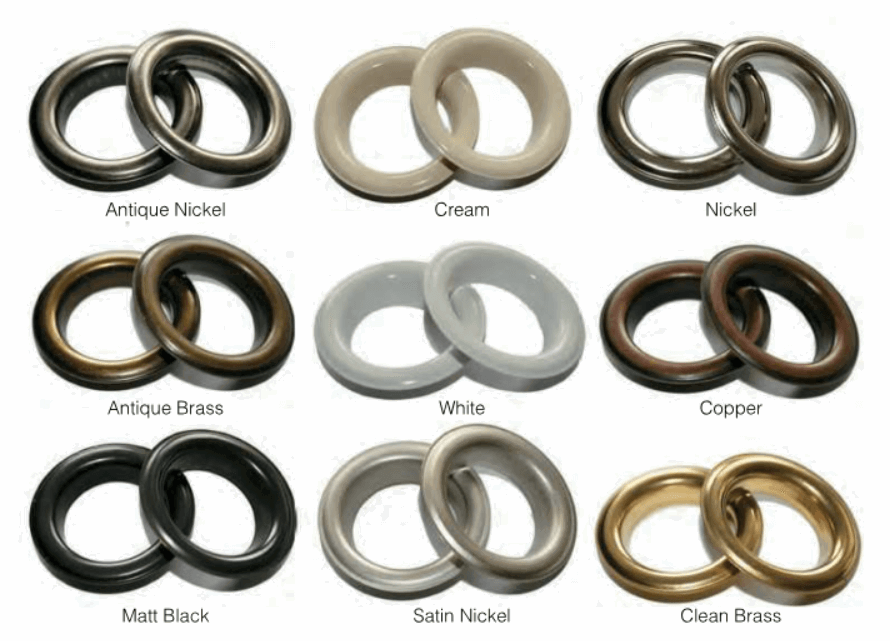 eyelet colours
eyelet colours
Wave Heading
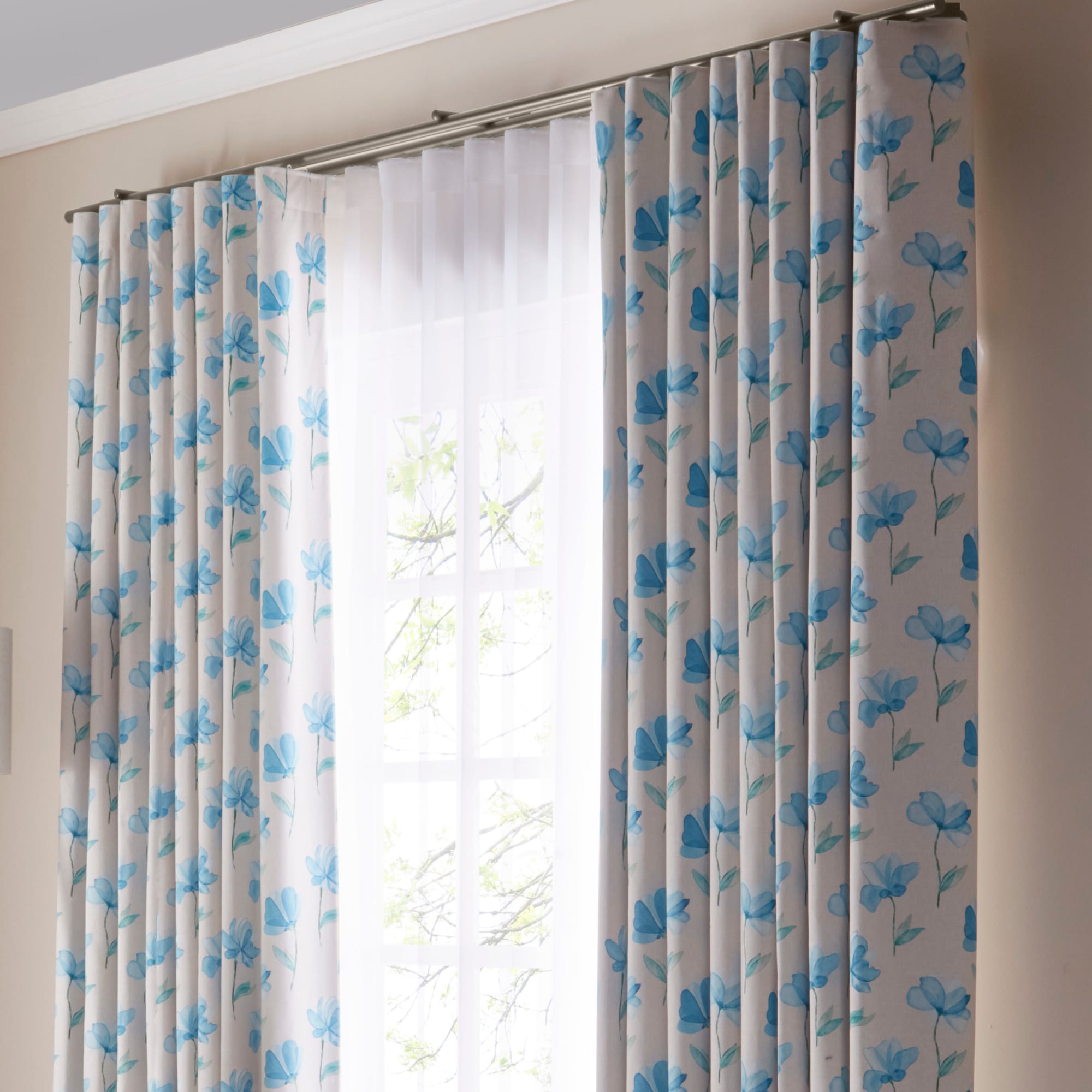
Options:
60mm or 80mm waves
How it works:
The carriers on the curtain track are connected by a cord that forms the curtain into wide, even, uniform folds - usually 6cm or 8cm deep. The curtains must hang below the track.
Important to Know:
Curtains stack back to a relatively small stack compared to pencil and pinch pleat headings.
Can be hung only on special tracks
Curtains have to be made to a set width to perform properly
Only suitable for lightweight fabrics
Tiebacks are not required
If all the above seems a little daunting, don't worry, we can help with expert advice - feel free to call in or contact us for more imformation


